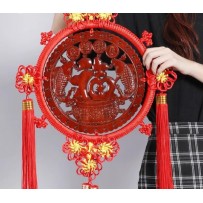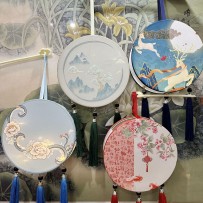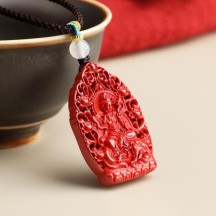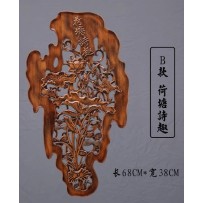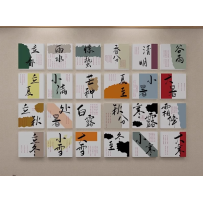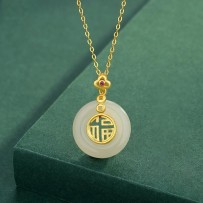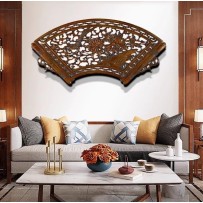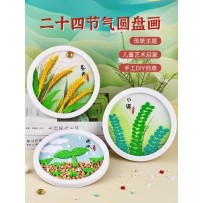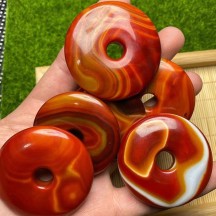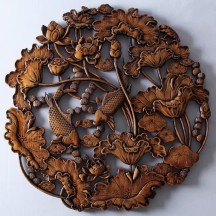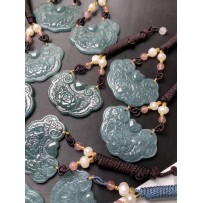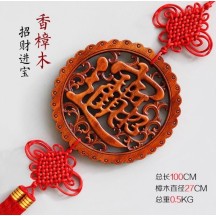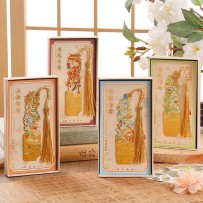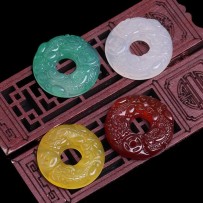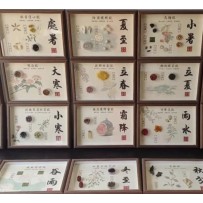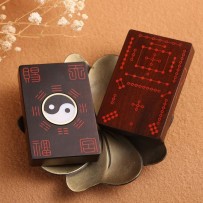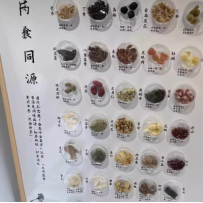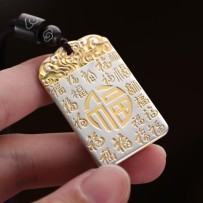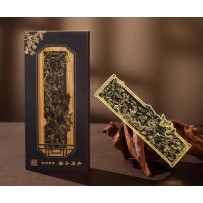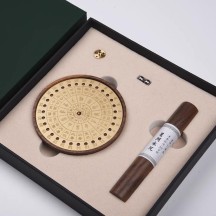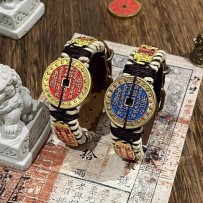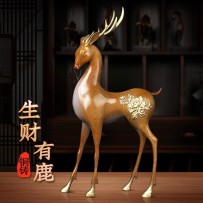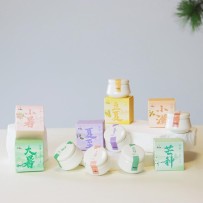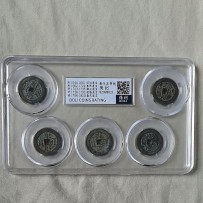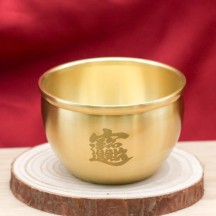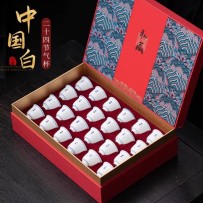The Chinese knot symbolizes unity, beauty, happiness and peace, and has meanings such as reunion, completeness and good fortune. Dongyang woodcarving has a long history. The patterns carved on it often contain rich cultural significance, endowing the pendants and ornaments with a deeper cultural background and expressing people's yearning for a better life.
Subcategories
Active filters
The idea of the guardian deity of the zodiac is that according to the ten heavenly stems and twelve earthly branches, the causal relationships of the 12 zodiac signs, and the mutual generation of the five elements of "earth, water, fire, wind, and space", the 12 zodiac signs are blessed by eight Buddhas and Bodhisattvas.
It is figuratively called the "birth Buddha", which is the guardian deity of the zodiac.
Buddha and Bodhisattva not only have a heart of compassion to save the world, but also a heart of enlightenment and awakening to others, protecting all living beings.
Dongyang woodcarving mainly features flat relief, and is characterized by multi-layered relief and scattered perspective composition. Carvers employ techniques such as thin relief, low relief, deep relief, high relief, and multi-layer layering to create works that are rich in layers yet dynamic, with smooth and natural lines, enabling them to vividly present various patterns on camphor wood.
Ping An Kou is a traditional Chinese jade ornament. It is round and flexible in appearance, which conforms to the "doctrine of the mean" in traditional Chinese culture. In ancient times, it was called "Bi" and has the effect of nourishing the body. In modern times, it is often given to lovers, relatives, and friends as a gift to wish for peace.
Dongyang woodcarving mainly features flat relief, and is characterized by multi-layered relief and scattered perspective composition. Carvers employ techniques such as thin relief, low relief, deep relief, high relief, and multi-layer layering to create works that are rich in layers yet dynamic, with smooth and natural lines, enabling them to vividly present various patterns on camphor wood.
Ping An Kou is a traditional Chinese jade ornament. It is round and flexible in appearance, which conforms to the "doctrine of the mean" in traditional Chinese culture. In ancient times, it was called "Bi" and has the effect of nourishing the body. In modern times, it is often given to lovers, relatives, and friends as a gift to wish for peace.
Dongyang woodcarving mainly features flat relief, and is characterized by multi-layered relief and scattered perspective composition. Carvers employ techniques such as thin relief, low relief, deep relief, high relief, and multi-layer layering to create works that are rich in layers yet dynamic, with smooth and natural lines, enabling them to vividly present various patterns on camphor wood.
The patterns on jade pendants are extremely delicate and varied, and through the patterns, we can understand the rich cultural connotations, production techniques, and social and economic environment of the time.
Dongyang woodcarving mainly features flat relief, and is characterized by multi-layered relief and scattered perspective composition. Carvers employ techniques such as thin relief, low relief, deep relief, high relief, and multi-layer layering to create works that are rich in layers yet dynamic, with smooth and natural lines, enabling them to vividly present various patterns on camphor wood.
Ping An Kou is a traditional Chinese jade ornament. It is round and flexible in appearance, which conforms to the "doctrine of the mean" in traditional Chinese culture. In ancient times, it was called "Bi" and has the effect of nourishing the body. In modern times, it is often given to lovers, relatives, and friends as a gift to wish for peace.
Dongyang woodcarving mainly features flat relief, and is characterized by multi-layered relief and scattered perspective composition. Carvers employ techniques such as thin relief, low relief, deep relief, high relief, and multi-layer layering to create works that are rich in layers yet dynamic, with smooth and natural lines, enabling them to vividly present various patterns on camphor wood.
The Hetu and Luoshu are two mysterious patterns handed down from ancient China. They contain profound principles of the universe and astrology and are known as the "Magic Cube of the Universe". They are the source of Chinese culture, Yin-Yang and the Five Elements. The phrase comes from the Book of Changes, "The Hetu and the Luoshu". He refers to the Yellow River. Luo refers to the Luo River.
Dongyang woodcarving mainly features flat relief, and is characterized by multi-layered relief and scattered perspective composition. Carvers employ techniques such as thin relief, low relief, deep relief, high relief, and multi-layer layering to create works that are rich in layers yet dynamic, with smooth and natural lines, enabling them to vividly present various patterns on camphor wood.
The Peaceful and Trouble-free plaque is a type of jade pendant. Because the entire jade plaque is not carved, there is a saying in the jade industry that things without any carvings are called "nothing", so the jade plaque borrows the meaning of "peaceful and trouble-free". "Peaceful and Trouble-free" means peace and everything goes well.
The talisman money is a Taoist prayer object. These coins are cast with patterns of the Eight Diagrams, immortals, Taishang Laojun, and the God of Thunder. The mountain ghost flower money is a carrier used by Taoist priests in the Qing Dynasty to cast spells to subdue demons and exorcise ghosts. It can also be called a magic tool. After being consecrated by Taoist priests, people are requested to hang it in their homes or carry it with them to ensure safety.
Deer are noble, elegant, gentle and mysterious animals with upright postures.They are a good choice for displaying at home or giving as gifts.
The Five Emperors' Coins refer to five round copper coins with square holes, which symbolize the power of the five elements and the five directions, and have the function of warding off evil spirits and bringing good fortune. The saying that the five emperors minted coins is mostly fabricated by later generations. People call the coins issued by several dynasties the Great Five Emperors' Coins. The Great Five Emperors' Coins are made of bronze, including the Qin Banliang, the Han Wuzhu, the Tang Kaiyuan Tongbao, the Song Yuan Tongbao, and the Ming Yongle Tongbao.
Because of its legendary meaning of attracting wealth and its function of receiving money, the cornucopia is listed as an important Feng Shui ornament for attracting wealth, along with the "golden toad" and "lucky cat". In China, especially among the Han people in the south of the Yangtze River, the cornucopia is a treasure for guarding the house.
The early forms of ancient coins were mainly shellfish. In China, from the late primitive society to the Xia, Shang and Zhou dynasties, the main form of currency was physical currency, and the most widely circulated was natural shellfish. Later, a small amount of metal weighing currency and coins appeared.










